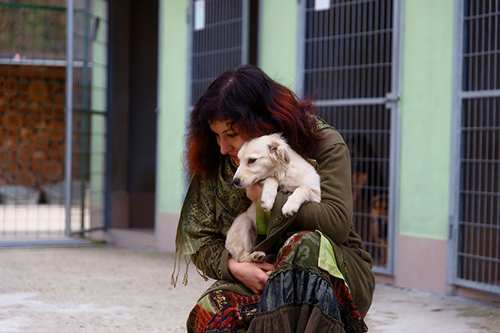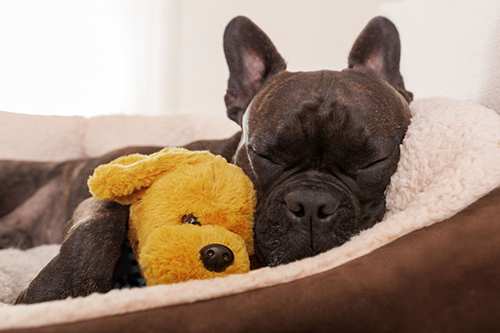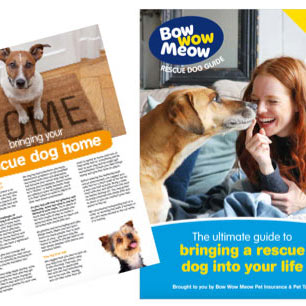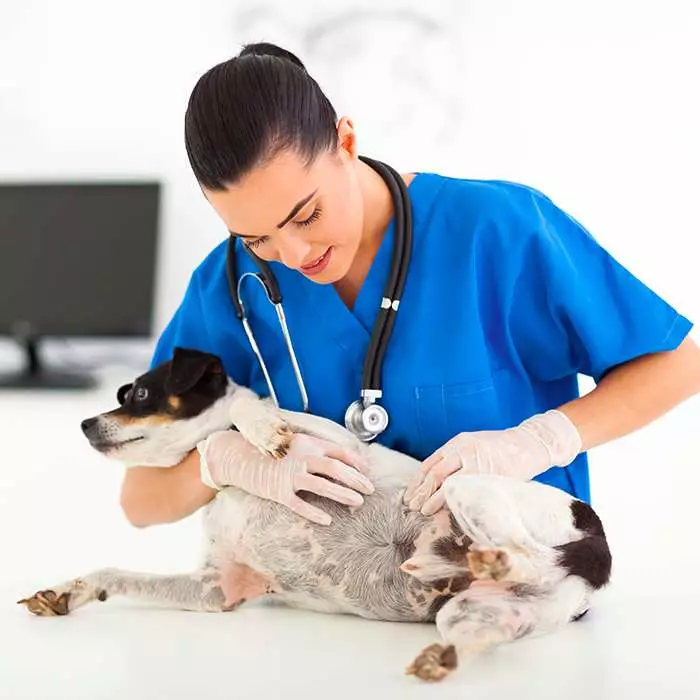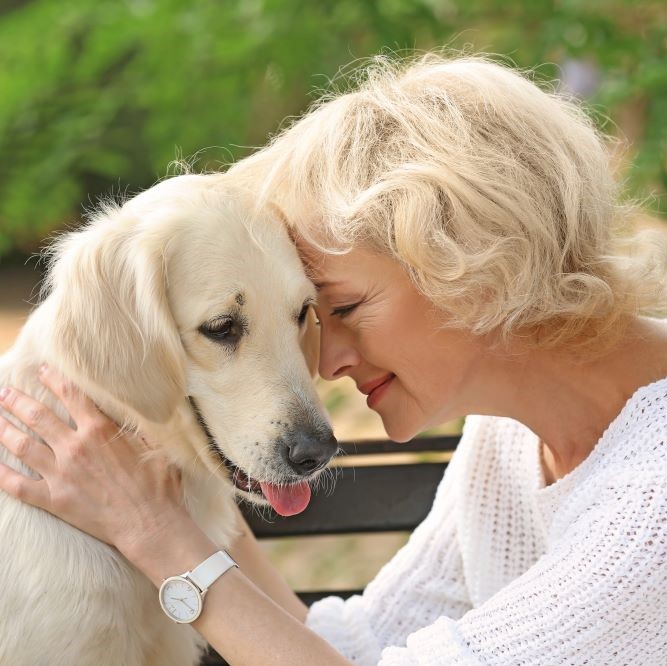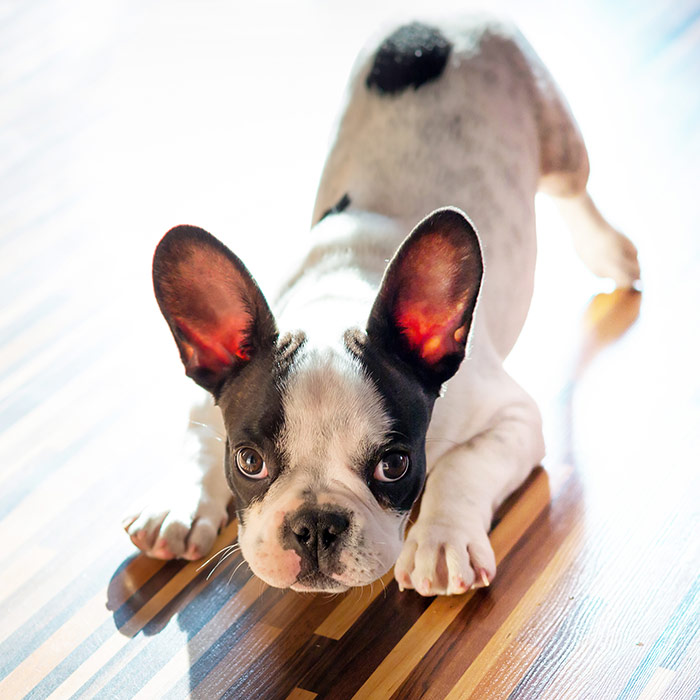Dog adoption guide: Tips on bringing your rescue dog home

Congratulations on adopting a new family member! Giving a dog a second chance in life is a wonderful and rewarding experience, and we applaud you for getting a rescue dog.
This article aims to help you make the entry of your newly adopted dog into your life and your home as easy as possible.
What to expect
In most cases, you won’t know much about your rescue dog’s history. Over the next few weeks and months, you will discover many things about your new rescue dog – what their likes and dislikes are, what they thrive on and what they fear. You will learn how well socialised your dog is, and what their level of training is. Be patient with your rescue dog and yourself on this journey.
Be aware that a rescue dog’s behaviour in a shelter can often be quite different from a home environment. Spending a longer time in a shelter (two months plus) can significantly influence a dog’s behaviour.
The following guide will help you through the first few weeks of your new family member’s arrival.
Preparing your home before your dog’s arrival
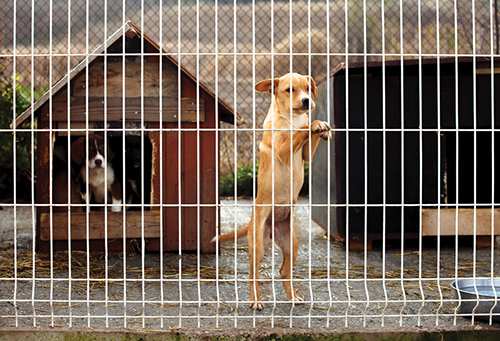
Copyright: vilevi / 123RF Stock Photo
Take some time to prepare for your dog’s arrival. To make the transition from shelter to home as easy as possible, it is important to provide your new dog with as much structure as you are able and to be clear about certain things before your rescue dog arrives.
- Decide where the dog will and will not be allowed. Are bedrooms a no-go zone? Then close the doors. Is the dog not allowed in a certain area of the house? Then use a baby gate to fence off the area.
- Will your dog sleep in a designated place (laundry, crate etc)? Set it up from day one.
- Set up your dog’s ‘feeding station’ – think about where his food and water will go.
- Make sure your fencing is secure if you have an outdoor area. Some dogs are natural born Houdinis, and others are strong enough to break through unstable fencing.
- Clearly define the family/household responsibilities: who walks the dog, who is responsible for feeding and who will be the one training the dog in your house.
- Get all necessary items, including an ID tag, collar, leash, food, water and food bowls, a cratem(if using) and bedding – and of course some toys.
- If you find your rescue dog is struggling to settle into the new environment, an Adaptil collar or spray can help calm them down. Ask your vet for advice on how to use it.
- We recommend you get a treat pouch or a bumbag to carry treats on you any time your dog is around you – so you can reward desirable behaviours on the spot. Did you know that dogs need to be rewarded in under 3 seconds in order to know what they are getting rewarded for?
- Doggy-proof your house: put loose cables away, store household cleaners and medication out of reach; remove plants, rugs and breakables etc. Move anything to you don’t want your dog to get hold of out of the way.
The day you pick up your rescue dog
- Ideally, plan to bring your dog home at a time when you can spend a few days at home. This will help with settling as well as giving you a chance to supervise your dog as they learn the house rules. Maybe choose a long weekend, or take a a few days off work if at all possible.
- Think about how to transport your dog home – consider bringing someone else along to drive the car while you comfort your dog. Put your dog in a harness or a crate to keep it safe and restrain it so it can settle. If you are on your own, bring a nice chew treat like a bully stick or a pig ear to help your dog enjoy the drive.
- When you get the dog in your car, let them sniff first and get familiar with this new area before you take off.
- Before taking the dog into your house, take them for a walk for around 30 to 40 minutes. This will not only burn off some energy, it will also give you time to bond and the opportunity to start building your relationship. Have some treats on you to let your new friend know when they have done something well. This will also very quickly make you their best friend!
- Ideally you want to make sure your dog does a wee before you get back home. This should help to avoid immediate accidents once you get home.
- Ask the shelter/foster carer about the rescue dog’s feeding schedule and replicate that for the first few days to avoid gastric stress. If you would like to change the brand of food, do it slowly over the course of a week. Dogs have more sensitive stomachs than humans and depending on your dog’s nature, moving to a new home can be stressful for them. Tips on what to feed your rescue dog.

Entering your house
- When you bring your new dog into your house for the first time, keep them on the leash while you show them around, both inside and outside. Let them sniff and take things slowly, at their own pace. Keeping your dog on leash will provide guidance and helps you to intervene before any accidents happen.
- Show your dog where the places for water and food are, and have a tiny bit of food in the bowl.
- After a stroll inside their new home, take your rescue dog outside for a wee. After all these new impressions, your dog may have to do a bit of business. Reward your dog when they urinate outside.
- If you have other pets at home, make sure the introduction is done safely and respectfully for all animals. Tips on how to introduce pets.
- Moving to a new environment is stressful for humans and dogs. Wait a day or two while your dog settles in before inviting visitors over. Also, go slow with introducing children to your dog, as you don’t want the animal to be overwhelmed. The greeting should be calm and without a lot of excitement (we know, that can be a challenge).
Important tips for the first few days
- If you can’t supervise your dog, limit their access to one room or area. This will help managing your new family member and avoid accidents of all kinds.
- Leaving your dog by itself for short periods of time will also help to avoid separation anxiety. Leave your dog alone while you go to get the mail or take the bins outside, and then when you have to go out for short intervals. Gradually increase the alone time. If your dog whines or barks, wait for them to be quiet before you return inside.
- House training accidents can happen. Even if your dog may have been house trained before, being in a shelter may have taught the dog something else. Be prepared and expect accidents. Here are some tips how to toilet train your dog.
- Don’t leave your new rescue dog alone with your existing pets. You will need to monitor and control their interactions for a period of time before leaving them alone.
- You probably do not know exactly what your dog’s previous experiences were. Be patient and forgiving if things don’t go the way you expected. Your rescue dog may not be socialised to certain things and be scared of them. Your rescue dog may also not have be taught something you would expect, or commands they have learned may be different to the ones you use.
- Establish a routine and start your schedule of feeding, play times, training, toileting, walks, etc. from the first day. Dogs like it when they are given structure. It’s best is to start reward-based training with your rescue dog right from the start – training is a fun way to bond and establish communication between you and your dog.
- Consider taking out Pet Insurance right from the start, before any pre-existing conditions have a chance to arise. This is particularly important for adult rescue dogs who may have health issues crop up in the first few months. Be aware that there are generally some waiting periods with a new policy, so always read the PDS to know what you are covered for and when you able to claim.
The next few weeks
- People often find that the first few weeks with a new rescue dog are like a honeymoon period where you get to know each other. Your rescue dog’s true personality may not show itself until later. Make sure you provide as much structure as possible during this time, follow the schedule you established so that they know what you expect from them and what they can expect from you.
- Once your rescue dog has all their necessary vaccinations, you may want to start taking them to a dog park or to group training classes. Watch your dog’s body language closely around other dogs to make sure they are having a positive experience. You don’t want your dog to be fearful or to be a dog park bully. Consider just starting off with a leashed walk around the dog park to see how they react towards other dogs. Find out more about dog vaccination schedules and costs.
- If you come across any behavioural issues you are not familiar with, seek help from a dog trainer or behaviourist. Tips on understanding your dog’s behaviour.
- Invite your friends and family over to pay low-key visits. These should be short and calm, without a lot of excitement. This way your dog will get used to meeting strangers in your house and get to know new people.

